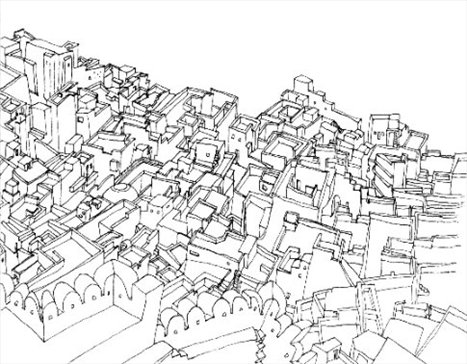
Jodhpur and Jaisalmer were founded to defend the great
desert trading routes east and so surround enormous stone and mortar forts
built atop rocky bluffs in the centre of town. From below the forts are
everywhere visible, and from their ramparts you can see the sprawl of city and
the distant, flat horizon.
Jaisalmer was rich as well as paranoid and the fort is
filled with merchant houses, or havelis, with intricate facades carved
in the distinctive yellow sandstone of the area. Many are preserved, some as hotels
or curio shops for the considerable contemporary trade in tourists. Jodhpur
kept the merchants outside the gates – there are stables and a Hindu shrine but
no sense that this was other than a royal residence.
Which they were, after all, and both have elaborate palaces
with high ceilinged rooms, elaborate stained glass windows and delicate carved
screens that protect against the formidable heat of summer and the eyes of the outside world. You
can pass unseen along third floor verandahs, the world reduced to a
kaleidoscope of light and colour.
With independence the princely states were dissolved into
India proper and the Maharajahs lost much of their power and authority. Many of
their palaces have been placed in trust for the nation or converted into hotels
of astonishing grandeur and luxury.
The rise of coastal shipping and Partition put paid to the
old desert routes but the proximity of the two cities to Pakistan has not
diminished their strategic value. Entering Jodhpur you pass caravans of military
vehicles and endless barbed wire bases. From the fort you watch the sharp
arrows of fighter jets cut across the sky, their roar following long after the
planes have banked and disappeared.
I cannot see, four hundred years hence, many tourists coming
to see the dusty wreckage of our current obsession with safety and security.